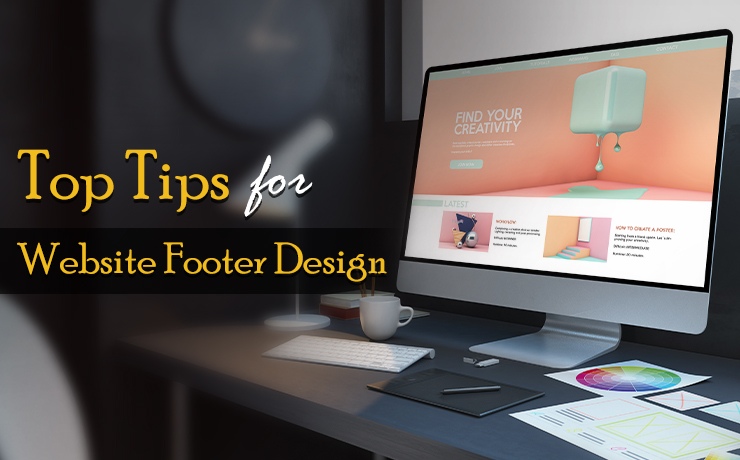Top Tips For Website Footer Design

Clement Foo
Senior Digital Content Manager

The footer of a website is a crucial aspect of its design that is often overlooked. It serves as a valuable tool for providing information and enhancing the user experience. A well-crafted footer can assist visitors in navigating the site, finding desired content, and even converting them into customers. In this article, we will highlight several essential tips for designing an effective website footer for a professional audience.
Keep it minimalistic
In terms of footer design, simplicity is key. The footer should be easy to read and comprehend, with a clear hierarchy of information. Avoid overwhelming the footer with an excessive number of links or calls to action. Instead, prioritize providing the most crucial information that visitors may be seeking.
Maintain consistency
The footer should align with the overall design and aesthetic of the website. This includes utilizing the same color scheme, typography, and imagery throughout the site. Consistency in design creates a seamless user experience and makes it effortless for visitors to navigate the site.
Incorporate useful links
The footer is an ideal location to include links to essential pages or sections of the website. These can include links to the contact page, about page, privacy policy, and terms and conditions. Incorporating these links in the footer increases the ease of access for visitors and improves the user experience.
Optimize for mobile
With the increasing number of individuals accessing the internet through mobile devices, it is crucial to ensure that the website’s footer is mobile-friendly. This involves designing it to be easily readable and navigable on smaller screens. Avoid utilizing small text or cramming too many links into a small space.
Incorporate call-to-action buttons
The footer serves as an effective location for incorporating call-to-action buttons, such as “subscribe” or “download now.” These buttons can assist in converting visitors into customers and drive conversions.
Include social media links
Social media has become a significant aspect of any business in recent times. It serves as a valuable tool for connecting with the audience and customers. Include links to social media profiles in the footer, enabling visitors to easily follow the brand on their preferred platform.
Display contact information
Include contact information, such as phone number and email address, in the footer. This makes it easy for visitors to reach out and can enhance the user experience.
Keep it current
Finally, it is vital to ensure that the website’s footer is kept up to date. This includes checking that all links are functional and that contact information is accurate. Keeping the footer current improves the user experience and ensures that visitors can access the necessary information. In conclusion, a website’s footer is a crucial aspect of its design that can provide valuable information and enhance the user experience. By keeping it minimalistic, consistent, mobile-optimized, and incorporating useful links, call-to-action buttons, social media links, contact information, you can design an effective website footer that will assist visitors in navigating the site, finding desired content, and converting them into customers. Remember to keep it current to ensure that visitors can access the necessary information.
 Free
Consultation
Free
Consultation Free
Google Ads Audit
Free
Google Ads Audit







